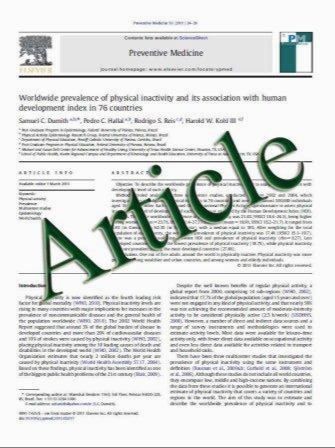Correlation of RDC/TMD axis I diagnoses and axis II pain-related disability. A multicenter study
- نوع فایل : کتاب
- زبان : انگلیسی
- مؤلف : Daniele Manfredini & Jari Ahlberg & Ephraim Winocur & Luca Guarda-Nardini & Frank Lobbezoo
- چاپ و سال / کشور: 2010
Description
As part of an ongoing multicenter investigation involving four highly specialized tertiary clinics for temporomandibular disorders (TMD) treatment, retrospective analysis of Research Diagnostic Criteria for TMD (RDC/TMD) axis I and axis II data gathered on clinic and community cases were assessed with a twofold aim: (1) to search for a correlation between axis I diagnoses and axis II pain-related disability, and (2) to identify clinical (axis I) and psychosocial (axis II) predictors of high pain-related disability. Two samples of patients seeking treatment for TMD (clinic cases, N=1,312) and a sample of general population subjects (community cases, N=211) underwent a thorough assessment in accordance with the RDC/TMD version 1.0 [1] guidelines to receive both axis I and axis II diagnoses. Spearman’s test was performed to assess the level of correlation between axis I diagnoses and Graded Chronic Pain Scale (GCPS) pain-related disability. A stepwise multiple logistic regression model was used to identify the significant associations between 12 clinical and psychosocial predictors and the presence of high painrelated disability. Axis I findings were related with painrelated impairment (GCPS scores) in the overall study sample including both clinic community cases (Spearman correlation=0.129, p=0.000), but the results of the correlation analyses performed on the clinic sample alone were not significant (Spearman correlation=-0.018, p=0.618). Predictors for high disability were related to axis II findings (severe depression and somatization) or psychosocial aspects related to the pain experience (pain lasting from more than 6 months; treatment-seeking behavior), while none of the axis I diagnoses remained in the final logistic regression model. The final model predicted the level of pain-related impairment at a fair level (R2=26.7%). The correlation between axis I diagnoses and pain-related impairment is not significant in the patients populations. Treatment-seeking behavior and other factors related with the pain experience are likely to be more important than the physical findings to determine the degree of psychosocial impairment
Clin Oral Invest DOI 10.1007/s00784-010-0444-4 Received: 13 April 2010 / Accepted: 30 June 2010


